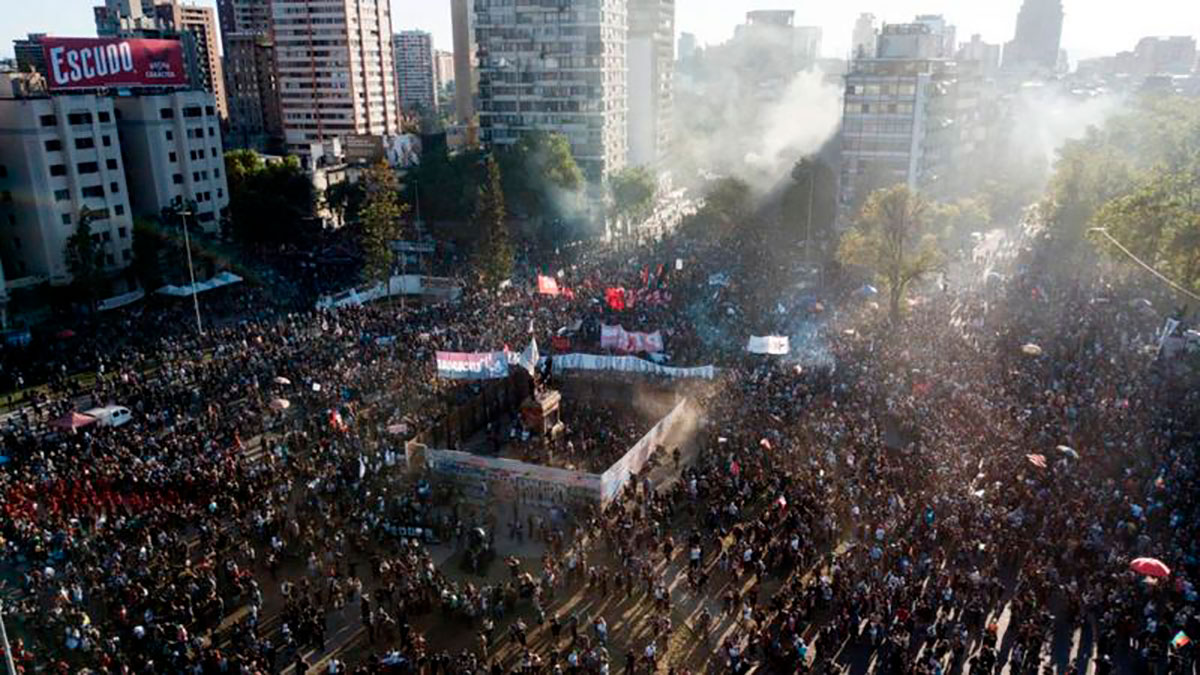With marches and some episodes of violence, Chile experienced its second anniversary of the “social outbreak”


The march was massive.
Photo: JAVIER TORRES / Getty Images
Chile lived on Monday the second anniversary of the social outbreak of October 18, 2019, when a wave of street protests led to the call for a constituent process in which the South American country is still immersed.
More than fifty marches were called in different parts of the Chilean geography to commemorate the two years since the protests began.


Although most took place peacefully, there were some episodes of violence. At the end of the day, the Minister of the Interior, Rodrigo Delgado, reported 30 people arrested and five Carabineros officials injured in the incidents.
“We are not in the presence of protesters, we are in the presence of some criminals, and I mean those who go and use these dates to commit crimes,” said the minister.
The main candidates for the presidency of Chile, which celebrates the first round of its elections on November 21, also showed their rejection of violence, although with a different tone.
The violence and destruction of the common is not and will not be our path, that only serves those who want everything to continue the same. It is in unity and respecting each other that we can build a worthy and fair Chile for everyone.
– Gabriel Boric Font (@gabrielboric) October 19, 2021
Looting, destruction and violence. With the complicit silence of the entire left, which also intends to pardon the violent.
In November it does not matter who wins. Faced with extremes, we are the option of change in peace, order and freedom. We can be the majority.#SocialShopping pic.twitter.com/iBBDNCOalN
– SichelPresidente (@sebastiansichel) October 18, 2021
Chileans: let’s not lose hope.
In the face of chaos and violence, our commitment is to restore order, justice and peace. #AtrevetePorChile pic.twitter.com/Qy4SeRTRhB
– José Antonio Kast Rist 🇨🇱 (@joseantoniokast) October 19, 2021
One of the main points of concentration was the Plaza Baquedano in Santiago de Chile, which was one of the epicenters of the outrage two years ago.
Near the Palacio de la Moneda there were clashes between the security forces and some protesters.
Fabiola Campilla, who lost her vision due to the effect of a tear gas canister during the 2019 protests and became one of their best-known faces, was one of those who manifested herself on the second anniversary.

In anticipation of incidents, some municipalities in the metropolitan region decided to remove some elements of urban furniture and the government had ordered the deployment of more than 5,000 police officers in areas considered at risk.
The marches and incidents forced the temporary closure of 10 Santiago metro stations.

By late afternoon, some public transport stops had been attacked and some had been set on fire.
The Carabineros de Chile reported that looting attempts had been detected in commercial premises of the capital.
The undersecretary of the Interior, Juan Francisco Galli, affirmed that the agents would act against the violent ones.
“Carabineros proceeds against looting in the center of Santiago. There is no legitimate demonstration in looting, burning public or private property or launching fireworks at people or police, “he said.

The incidents of this Monday add to the tension that is experienced in the Araucanía and Biobío region, where the government decreed a state of emergency on October 12 in response to what President Piñera described as “serious and repeated acts of violence linked to drug trafficking, terrorism and organized crime committed by armed groups ”.
La Araucanía is the region where the majority of the Mapuche indigenous people live, who have staged protests over what they consider to be the unjust expropriation of their ancestral lands.
Now you can receive notifications from BBC Mundo. Download the new version of our app and activate them so you don’t miss out on our best content.
.



